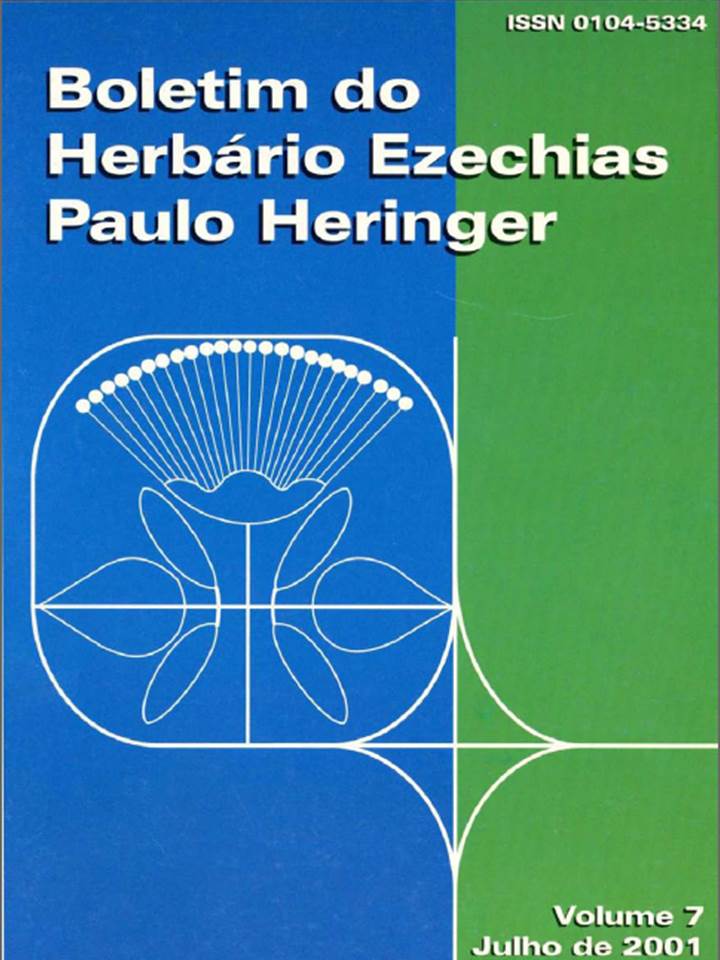CARACTERÍSTICAS DA VEGETAÇÃO E DO SOLO EM DUAS COMUNIDADES VEGETAIS CONTÍGUAS NO TRIÂNGULO MINEIRO
Resumo
Estudaram-se variáveis de natureza pedológica e florística, objetivando explicar a seqí¼ência floresta mesófila semidecídua - cerradão, numa vertente do Córrego Boa Vista, Bacia do Rio Araguari, Município de Uberlândia - MG. Na floresta mesófila, foram encontradas 83 espécies (CAP 10 cm) e 44 famílias, com indice de Shannon (H') para espécies de H'=3,7 nats/indivíduo e, no cerradão, amostraram-se 59 espécies de 35 famílias (H'= 3,4 nats/indivíduo). As três espécies com maior valor de importância (VI) na floresta foram: Cheiloclinium cognatum, Tapirira peckoltiana e Copaifera langsdorffii; no cerradão foram: Siparuna guianensis, Qualea grandiflora e Caryocar brasiliense. Lauraceae, Moraceae e Hipocrateacae, foram as famílias com maior VI na floresta e Vochysiaceae, Monimiaceae e Caesalpiniaceae, no cerradão. O solo sob a floresta apresentou maior teor de matéria orgânica e de Ca+ Mg na camada superficial (Oa 1 cm), mas abaixo de 1 cm os valores caíram a níveis similares aos do cerradão. A água no solo, até 320 cm de profundidade, no mês de outubro, variou, vertente acima, de 42% a 15% na floresta, e, no cerradão, situou-se entre 16% e 13%, sugerindo ser esse um fator importante no estabelecimento da floresta na porção inferior da vertente.
Termos para indexação: fitossociologia, cerradão, floresta mesófila semidecídua, relações solo-vegetação.
ABSTRACT - Pedological and floristic variables were studied aiming to explain the semideciduous mesophytic forest - savanna woodland boundaries, at the upper Boa Vista stream, a tributary of Araguari river; near Uberlândia, Minas Gerais, Brazil. In the semideciduous forest, 83 species (CAP > 10 cm) and 44 families were observed, with Shannon's index of H'=3.7 nats/individual. In the savanna woodland, 59 species and 35 families were sampled, with Shannon's index of H'=3.4 nurs/individual. The most important species of the forest were: Cheiloclinium cognatum, Tapirira peckoltiana and Copaifera langsdorffii, and in the savanna woodland: Siparuna guianensis, Qualea grandiflora and Caryocar brasiliense. The most important families in the forest were: Lauraceae, Moraceae and Hippocrateaceae, and in the savanna woodland: Vochysiaceae, Monimiaceae and Caesalpiniaceae. In the superior stratum (0 - 1 cm), the soil of the forest presented greater content of organic matter, Ca+Mg but the values were similar of the savanna woodland values below 1 cm. The water content in the soil, at 320 cm depth, in October, varied from 42% to 15% beneath the forest, while it varied from 16% to 13% under the savanna woodland, suggesting that this is an important factor in the establishment of the forest down the slope from the watershed.
Index terms: Phytosociology, savanna woodland, semideciduous mesophytic forest, relationship soil-vegetation.


